| Title | Pages |
|---|---|
| Enhanced Anticancer Potency of Gemcitabine in Combination With Propofol in Prostate Cancer In the present study, the effects of propofol which is an intravenous anesthetic on its own and simultaneously with gemcitabine were investigated on human prostate cancer brain metastasis DU145 and bone metastasis PC3 cells at both cellular and molecular levels. In the first stage of our study, toxic doses of these agents were determined by using the CVDK-8 and lactate dehydrogenase release test. In the following phases, TAC and TOS analyzes were performed to determine the biochemical effects of these agents on cell lines, and also western blot analysis was used to show the inhibition of important oncogenic PI3K/AKT/mTOR pathway in cells treated with these agents. Propofol was found to increase the effectiveness of gemcitabine in both cells. When propofol and gemcitabine were administered simultaneously at high concentrations, they reduced cell viability and increased LDH activity. According to the results obtained from the western blot analysis, the combination of these two agents was found to lead to synergistic inhibition of the PI3K/Akt/mTOR pathway. 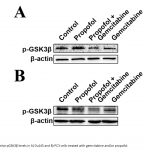
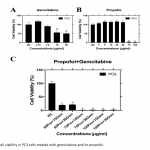
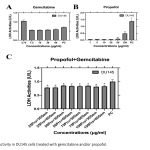

|
1 - 12 |
| Photoprotective and Therapeutic Effects of Apamin, Melittin and Phospholipase A2 on Human Keratinocyte Cell Line The aim of this study was to determine the protective and therapeutic properties of bee venom components Apamin, Melittin and Phospholipase A2 against UV damage in human keratinocyte cell line. The cosmetic and therapeutic effects of bee venom have been reported in previous studies, but it is not known which components of the venom are most effective. For this purpose, an in vitro UV damage model was first designed. Components of bee venom were tested at different concentrations. Cell viability, cytotoxicity and apoptotic processes were analysed on the designed model. As a result, Apamin was observed to exert a significant protective effect against UV-induced cell death at all concentrations. The photoprotective effects of Melittin were observed at all concentration times, and it was found that the photoprotective effects were increased at high concentrations. Our results showed that Phospholipase A2 can be used as a photoprotective and phototherapy agent. This study is the first to demonstrate the protective and therapeutic properties of bee venom components against UV damage. As a result, it has been shown that these components can be successful photoprotective and phototherapeutic agents against UV-induced damage, but more detailed studies should be done to minimize their toxic effects on cells. 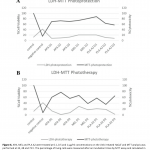
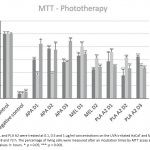
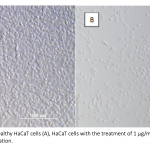

|
13 - 24 |
| Factors Affecting the Incidence of Group A β-Hemolytic Streptococci Isolated from Throat Culture Group A beta-hemolytic streptococci (GABHS) rank first among bacterial factors causing tonsillopharyngitis. These bacteria are especially common in school-age groups. The incidence increases in winter and seasonal transitions. In this study, we aim to examine the presence of GABHS in throat swab samples of people from different age groups. Therefore, we identified the reproductive frequency of GABHS in the throat culture of patients admitted with tonsillopharyngitis from 2017 to 2019 and then detected differences in the infection across age groups, months, and seasons. It was found that 8.1%, 52.4%, 21.5%, and 11.0% of isolated factors were in the age groups of 0-2, 3-6, 7-9, and 10-14, respectively. Particularly, in the 3-14 age group, the number of cases accounts for 84.9% of the total number of cases. The highest rate of infection was observed in children aged 3-6 years, and the infection was quite high in the spring (34.5%) and winter (29%). Regarding the distribution of the factor across clinics, the Department of Pediatrics was the first, and the Department of Pediatric Nephrology and Rheumatology was the second. In conclusion, controlling the spread of infections at school age is of great importance as GABHS has increased over the years. 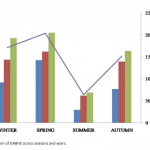
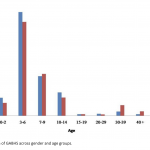
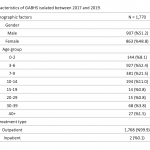
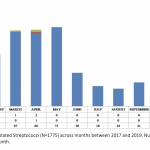
|
25 - 30 |
| Synthesis of Silver- and Gold-N-Heterocyclic Carbene Complexes Including Strong Metal-Carbon Binding In this study, the new benzimidazolium salt (1) containing ether functionalized alkyl group as the NHC ligand precursor was synthesized. Ag−NHC complex (2) was synthesized by interaction with Ag2O of this ligand precursor. The Au−NHC complex was synthesized by interaction of the [AuCl(PPh3)] complex with the synthesized Ag−NHC complex. The structures of prepared all new compounds were characterized by different spectroscopic methods. 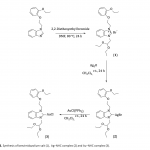
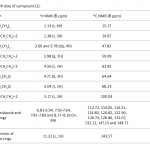
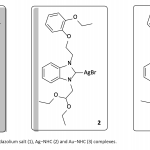
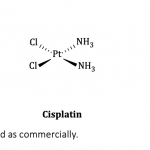
|
31 - 36 |
| Chemical Chaperone Effects on Arginine Vasopressin Receptor 2 Mutants Improper folding of the mutant proteins may finally cause several conformational diseases such as Nephrogenic Diabetes Insipidus (NDI). In recent years, as a therapeutic strategy, chaperone treatment for such diseases is among current issues. In our study, we aimed to analyze the effect of several chemical chaperones on mutant V2 receptors which cause NDI. V2R mutant constructs were introduced into the pLV2R. Mutants were transiently expressed in COS-7 cells. After MTT analyses, cell surface and sandwich ELISA experiments was performed for understanding the rescue potential of the chaperones of the mutated proteins. As a result, we analyzed that rescue potential of a chemical chaperone depends on both chemical compound and the mutation type. We may conclude that such chaperone treatment studies are valuable for development of the therapeutic strategies. 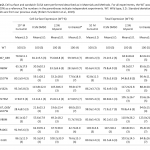
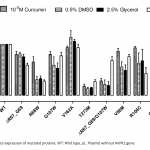
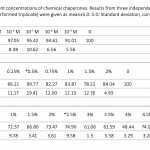
|
37 - 43 |
| Validation of Determination by Icp-Oes Method of Mercury Residual Levels in Meat of Canned Fish Put up for Sale in Turkey This study describes the residual mercury levels in canned fish marketed in Turkey. In total, 375 fish samples were analyzed by Inductive Coupled Plasma Optical Emission Spectrometry (ICP OES) for mercury residues. The quantification limit (LOQ) from the validation data ranged from 0.008 to 0.043 mg kg-1. Accuracy and precision were evaluated by means of recovery experiments at two concentration levels (30, and 50 mg kg-1), obtaining recoveries between 87.5% and 109.3% and coefficient of variation below 10%. Also, the relative standard deviation (RSD) ranged from 0.2% to 9%. The expanded measurement uncertainty for mercury ranged from 11.1% to 19.2%. In investigated samples, 4.8% were detected at a detectable level of mercury, but these levels were below the legal limits. With regard to hg level were no significant correlations (p < 0.05) between species. According to Turkey’s legislation, none of for example the maximum limit of 1.0 mg kg-1 did exceed the level, but 1.3% exceeded the limit recommended by the Food and Agriculture Organization/World Health Organization (0.5 mg kg-1). The reproducibility limits obtained as a result of the validation study were found to be appropriate in accordance with both the NMKL 170 method and the Turkish Food Codex (Communiqué No: 2014/2), as well as the EU Commission Decision 2002/657/EC. 
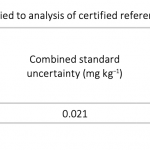
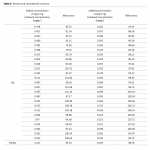
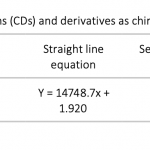
|
45 - 54 |
| Preparation and Investigation of Antibacterial Activities of Ciprofloxacin Imprinted p(HEMAH) Cryogels Staphylococcus aureus, Enterococcus faecalis and Escherichia coli are the common causes of wound infections. For the treatment of these infections, ciprofloxacin can be recommended as a broad-spectrum antibiotic that acts on both Gram-negative and Gram-positive microorganisms. Besides, antimicrobial agents could be integrated into polymeric materials. Cryogels, one of these polymeric materials, are spongy polymers showing high macroporosity. In addition to their attractive usage as affinity support materials and scaffolds, they also appear as drug carrier materials in recent years. Molecular imprinting method is a recognition technique prepared by forming a polymeric network around the template. Although this method has been used in purification and separation processes for more than thirty years, it has gained great interest as a new approach that provides an advantage in drug release studies in terms of high drug loading capacity and long-term release. In this study, ciprofloxacin (CIP) imprinted 2-hydroxyethyl methacrylate (HEMA) based N-methacryloyl-(L)-histidine methyl ester (MAH) containing [CIP-p(HEMAH)] cryogels were prepared and characterized. CIP releasing experiments were performed, and then, antimicrobial activities of CIP p(HEMAH) cryogels were examined against S. aureus, E. faecalis and E. coli. It was found that cumulative CIP release ratios were indicated as 80.6% and 88.5% for CIP-p(HEMAH) cryogels at the end of 6 and 120 h, respectively. It can be concluded that CIP-p(HEMAH) cryogels could be proposed as promising polymeric materials for wound healing applications. 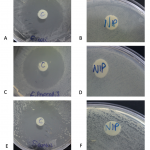
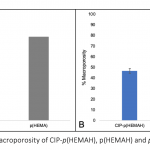
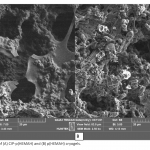
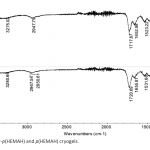
|
55 - 64 |
| Purification of Ovalbumin From Egg White Using Molecular Imprinted Cryogels In recent years, food allergy is one of the most important problems worldwide. Ovalbumin is one of the main allergens found in egg whites. In this study, ovalbumin imprinted and non-imprinted poly(hydroxyethyl methacrylate-methacrylic acid (poly(HEMA-MAA)) cryogels were synthesized using molecular imprinting method. After characterization of ovalbumin imprinted cryogels, the effect of flow rate, pH buffer, einitial ovalbumin concentration, ionic strength, and temperature parameters are examined. The maximum ovalbumin adsorption amount was determined to be 37.78 mg/g of ovalbumin imprinted cryogels at pH 5.5, 25°C and a flow rate of 0.5 mL/min. The selectivity studies of ovalbumin imprinted and non-imprinted cryogels were performed using lysozyme and transferrin as competitor molecules. In addition, reusability experiments of ovalbumin imprinted cryogels were performed. The purity of ovalbumin was determined from egg white using sodium-dodecyl sulfate polyacrylamide gel electrophoresis (SDS-PAGE). The purity of ovalbumin was found to be approximately 85.4%. 
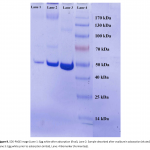
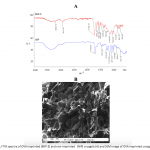
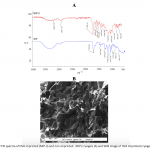
|
65 - 76 |
| TMEM106C is Overexpressed and Modulates Cell Mobility in Metastatic Colon Cancer Cells Colon cancer is the third most commonly diagnosed cancer in worldwide. Colon cancer grows slowly and metastasis has already occurred after diagnosis. Therefore, new targets are needed in the colon cancer treatment and diagnosis. Transmembrane proteins (TMEM) play a critical role in variety of tumor cells and present different expression profile. TMEM106C is one of TMEM family proteins, but role of this gene in colon cancer development remains unclear. In this study, we aimed to investigate the role of TMEM106C gene in metastatic colon cancer cells. TMEM106C gene expression level was tested by western blot, qRT-PCR and immunofluorescence methods. In order to test the effect of TMEM106C in colon cancer cells, this gene has been knockdown with shRNA technology. In addition, cell invasion, migration and adhesion assays were performed to clarify whether TMEM106C knockdown has effect on colon cancer metastatic characters. For the first time, in this study, we showed that TMEM106C is overexpressed in colon carcinoma cells. Moreover, we demonstrated that cell migration, invasion and adhesion capabilities are reduced in TMEM106C silenced cells. Furthermore, we observed that metastatic cell morphology was changed upon to knockdown of TMEM106C. In conclusion, we showed that TMEM106C gene is important for colon carcinoma cells. 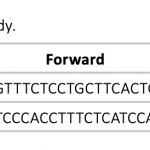

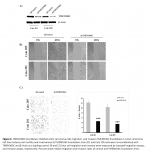
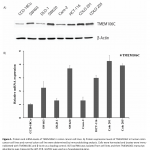
|
77 - 84 |
| Gold Nanoparticle Immobilized Porous Manganese Oxide Microspheres As Heterogeneous Catalyst for Benzyl Alcohol Oxidation Aheterogeneous catalyst in the form of Au nanoparticles (Au NPs) immobilized porous manganese oxide (Mn5O8) microspheres was synthesized. Mn5O8 microspheres were obtained by sol-gel templating method. The heterogeneous catalyst (Au@Mn5O8) showed good performance when compared with similar catalysts in the oxidation of benzyl alcohol (BnOH). Au@Mn5O8 microspheres obtained by the decoration of Au NPs on Mn5O8 microspheres performed 99.4% of BnOH conversion and 100 % of benzaldehyde (BnCHO) formation yield. Also the heterogeneous catalyst showed a good stability and agglomeration resistance in the reusability experiments. There was no remarkable loss in the catalytic activity when the catalyst was reused up to 5 times. 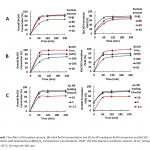
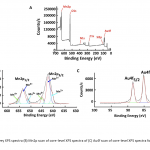
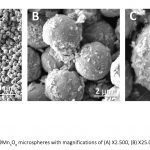
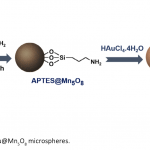
|
85 - 92 |
| Effect Of α- Tocopherol and Ascorbic Acid on the Genotoxicity by Gamma- Irradiation in Drosophila melanogaster Determination of the radioprotective effects of non-toxic and effective natural antioxidants is an important issue. Vitamin E is known for its efficient scavenging of free radicals, which are generated by irradiation. Additionally vitamin C can be act as pro-oxidant or antioxidant, although the effect is concentration dependent. We investigated the antimutagenic effects of the vitamin E and C administration (separately and together) under gamma-irradiation in Drosophila melanogaster. We used two different genetic toxicology tests including SLRL (Sex Linked Recessive Lethality) and Translocation. Radiation and vitamin applications were administered only to males which were crossed with females which had not taken vitamin and radiation beforehand. Then, offspring of the males were scanned to determine individuals carrying lethal chromosomes generated via irradiation. Then we investigated whether vitamin administration reduced the number of individuals having the lethal chromosomes generated by irradiation. Results indicate that vitamin E affected the lethal frequency significantly only when administered alone and before irradiation. Vitamin C did not preventive effect at all. Vitamin C and E administration with together did not reduce the lethality compare the control. 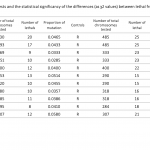
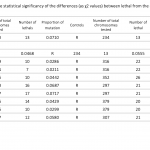
|
93 - 98 |